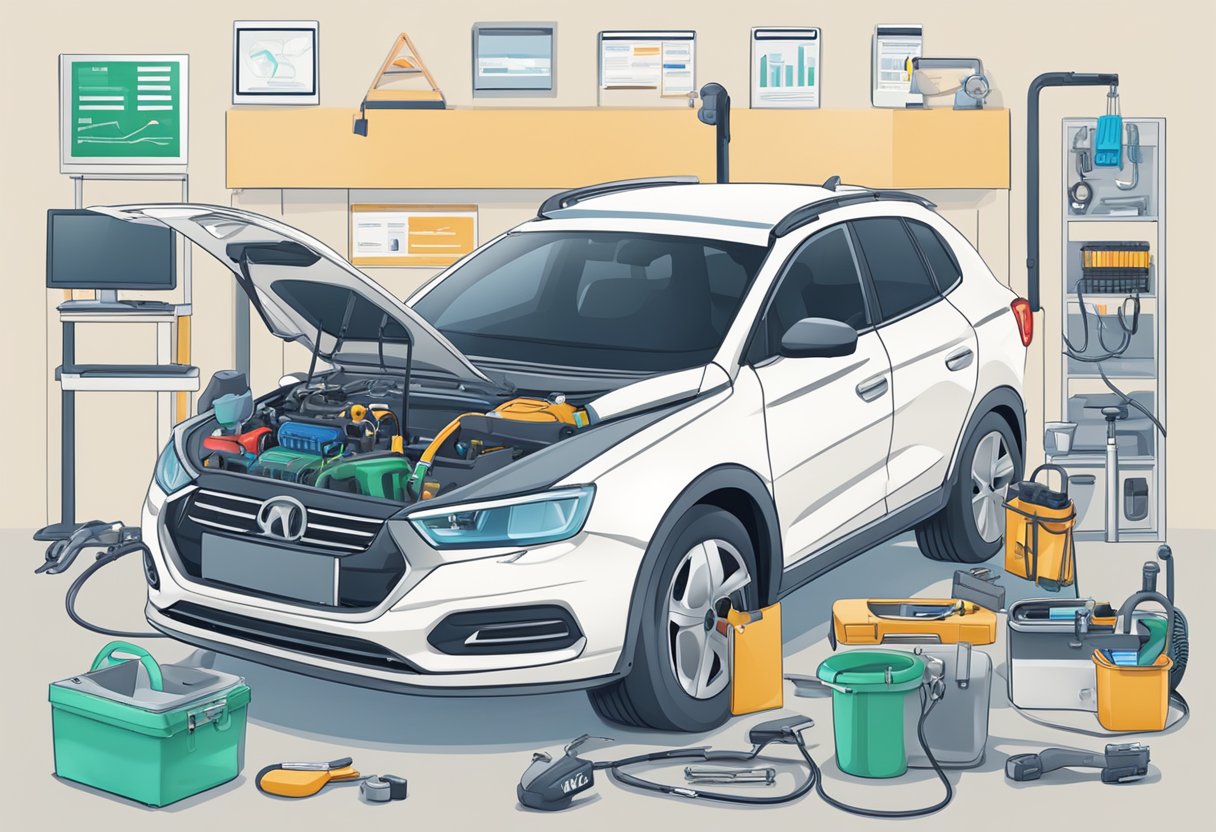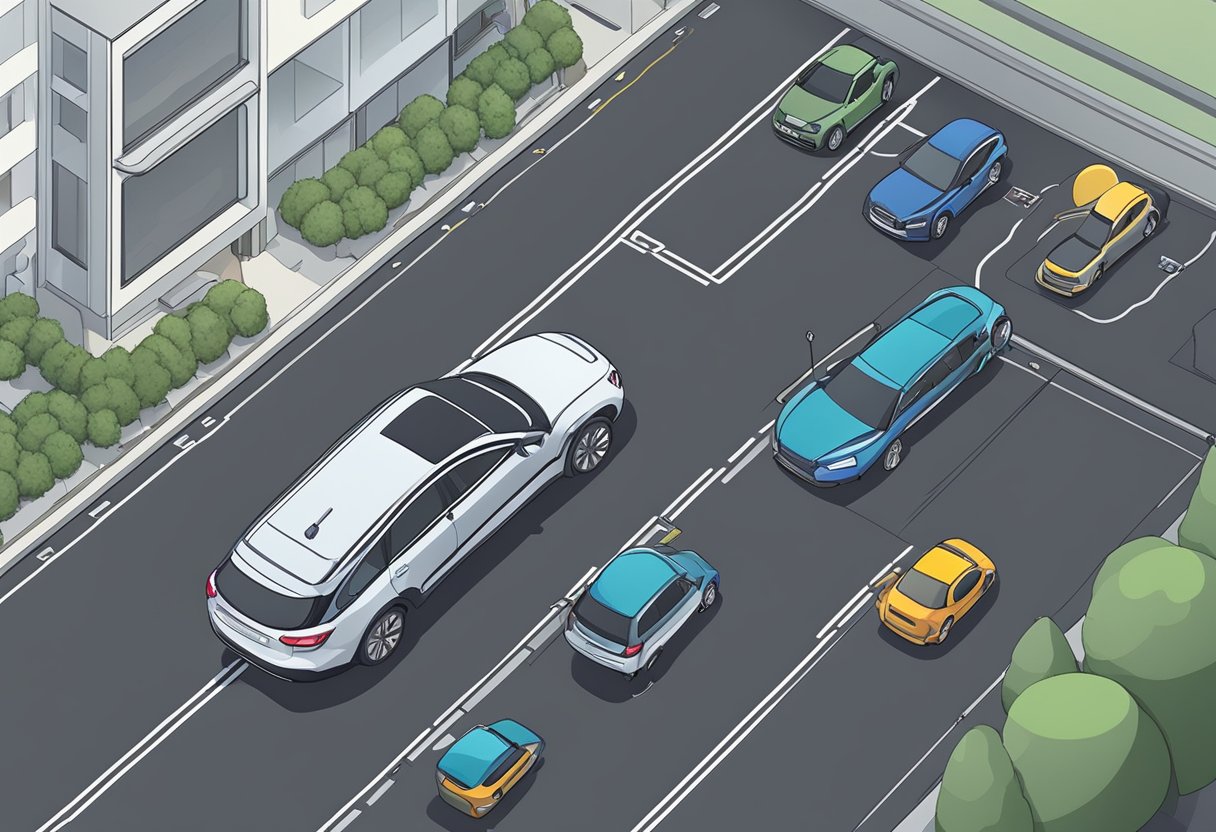If you own a vehicle equipped with a park assist system, you may have encountered a “service park assist” message on your dashboard. This warning message indicates that there is an issue with the park assist system, and it needs to be addressed to ensure the safety of your vehicle.
Park assist systems use sensors and cameras to detect objects around your vehicle, making it easier to park and maneuver in tight spaces. When the system detects a malfunction, it will trigger the “service park assist” message, alerting you to the issue.
There are several reasons why you may see this warning message. The sensors may be dirty or damaged, the wiring may be faulty, or there may be an issue with the trailer hitch. In this article, we will explore the common causes of the “service park assist” message and provide you with some tips on how to resolve the issue.
Understanding Park Assist Systems
Park assist systems are designed to help drivers park their vehicle safely and accurately. These systems use a combination of sensors, cameras, and other components to detect obstacles and provide feedback to the driver. In this section, we will provide an overview of the components of park assist systems, how they work, and common park assist terminology.
Components of Park Assist
The main components of a park assist system include sensors, cameras, a control module, and a park assist module. Sensors are typically located on the front and rear bumpers of the vehicle and use ultrasonic technology to detect objects in the vicinity of the vehicle. Cameras are often located on the rear of the vehicle and provide a visual display of the area behind the vehicle. The control module is responsible for processing the data from the sensors and cameras, while the park assist module provides the driver with feedback on the parking process.
How Park Assist Works
When the driver engages the park assist system, the sensors and cameras begin to scan the surrounding area. The control module analyzes the data from the sensors and cameras and provides feedback to the driver through the park assist module. The driver is then guided through the parking process using visual and/or audible cues.
Common Park Assist Terminology
Here are some common terms you may come across when dealing with park assist systems:
- Proximity sensors: These are sensors that detect the distance between the vehicle and an object.
- URPA (Ultrasonic Rear Parking Assist): This is a type of park assist system that uses ultrasonic sensors to detect obstacles behind the vehicle.
- Object alarm module: This is a module that detects malfunctions in the object detection system and sends a request to the driver information center (DIC) for display of the message.
Understanding the components, operation, and terminology of park assist systems can help you diagnose and resolve issues with your vehicle’s park assist system.
Identifying Park Assist Issues
If you are seeing the “Service Park Assist” message on your vehicle’s gauge cluster, it indicates a problem with your park assist system. This message could be triggered by various issues, including dirty or faulty sensors, faulty wiring, or a faulty park assist module. In this section, we will discuss how to interpret the service park assist message and the symptoms of malfunctioning park assist.
Interpreting the Service Park Assist Message
When you see the “Service Park Assist” message on your gauge cluster, it means that there is an issue preventing the park assist system from working correctly. The location of the park assist sensors can vary depending on your vehicle’s make and model, but they are typically located on the front and rear bumpers. If one or more of these sensors is dirty or faulty, it can trigger the service park assist message.
Symptoms of Malfunctioning Park Assist
If your park assist system is malfunctioning, you may notice erratic operation or a complete failure of the system. Some common symptoms of a malfunctioning park assist system include:
- The system fails to detect objects around your vehicle
- The system gives false alerts
- The system fails to activate or deactivate when you shift into or out of reverse
If you are experiencing any of these symptoms, it is important to have your park assist system checked by a qualified mechanic. They can diagnose the issue and make the necessary repairs to get your system working correctly again.
In summary, the “Service Park Assist” message can be triggered by various issues, including faulty sensors, faulty wiring, or a faulty park assist module. If you are experiencing symptoms of a malfunctioning park assist system, it is important to have your system checked by a qualified mechanic to ensure your safety on the road.
Troubleshooting Park Assist Problems
If you’re experiencing issues with your park assist system, there are a few things you can do to troubleshoot the problem before taking your vehicle to a mechanic. Here are some steps you can take to fix the issue:
Sensor and Wiring Inspections
The first thing you should do is inspect the park assist sensors and wiring. Check for any visible damage, such as corrosion or loose connections. Make sure the sensors are clean and free of any debris that could be blocking the signal. If you find any damaged wiring or connectors, you may need to replace them.
Checking for Electrical Issues
If there are no visible issues with the sensors or wiring, the problem may be electrical. Check the fuse box for any blown fuses related to the park assist system. If you find any blown fuses, replace them with a fuse of the same amperage. If the fuses are intact, you should check the wiring harness and ground connections for any bad connections.
Resetting the Park Assist System
If you’ve inspected the sensors, wiring, and electrical components and still can’t find the issue, you may need to reset the park assist system. To do this, locate the reset button, which is usually located near the fuse box. Press and hold the button for a few seconds until the system resets. If this doesn’t work, consult your vehicle’s manual for instructions on how to reset the system.
By following these troubleshooting steps, you can resolve most park assist problems without having to take your vehicle to a mechanic. If you’re still experiencing issues after trying these steps, it may be time to take your vehicle in for a professional inspection.
How Can Proper Maintenance of a Chrysler 200 Help Prevent Service Park Assist Messages?
Proper maintenance of your Chrysler 200 oil essentials is crucial to prevent service park assist messages. Regularly checking and changing the oil, as well as monitoring other essential fluids and components, can help ensure that your vehicle’s park assist system functions properly without interruptions.
Maintaining Your Park Assist System
Regular maintenance and cleaning of your park assist system can help prevent the service park assist message from appearing on your gauge cluster. Here are some things you can do to keep your park assist system in good working condition:
Regular Maintenance and Cleaning
- Check your vehicle’s owner’s manual for specific instructions on how to maintain and clean your park assist system.
- Regularly inspect the sensors for any signs of damage, such as cracks or scratches. If you notice any damage, replace the sensors as soon as possible to avoid any potential problems.
- Clean the sensors with a soft cloth to remove any debris, dirt, or snow that may have accumulated on them. Avoid using harsh chemicals or abrasive materials that could damage the sensors.
- Check the wiring and connections for any signs of damage or corrosion. If you notice any problems, have them repaired by a qualified mechanic.
Preventive Measures to Avoid Damage
- Be mindful of the weather conditions when parking your vehicle. Moisture, condensation, and snow can interfere with the sensors and trigger the service park assist message.
- Avoid parking your vehicle in areas with a lot of debris or dirt, such as construction sites or unpaved roads.
- Be careful when installing accessories, such as trailer hitches or bike racks, that could interfere with the sensors. Make sure they are properly installed and do not block the sensors.
- Be mindful of the height of curbs and other obstacles when parking your vehicle. Hitting them could damage the sensors and trigger the service park assist message.
By following these tips, you can help ensure that your park assist system is working properly and avoid any potential problems that could trigger the service park assist message.
Professional Services and Repairs
If you have tried all the DIY solutions to resolve the “Service Park Assist” message and the problem persists, it may be time to seek professional help. A certified mechanic or dealership technician can diagnose and repair the issue with your park assist system.
When to Seek Professional Help
If you notice any of the following signs, it’s time to seek professional help:
- The “Service Park Assist” message continues to appear even after trying all DIY solutions.
- The park assist sensors or module are damaged.
- The electronic shift module is malfunctioning.
- The battery or batteries that power the park assist system are low or dead.
Costs and Considerations for Repair
The cost of repairing your park assist system can vary depending on the make and model of your vehicle, the severity of the issue, and the cost of replacement parts. According to AutoZone, the average cost of repairing a faulty park assist sensor is between $250 and $400.
It’s important to note that repairs to the park assist system can be costly, and it’s important to consider the age and value of your vehicle before investing in repairs. If your vehicle is older or has high mileage, it may not be worth the cost of repairing the park assist system.
In conclusion, seeking professional help for your park assist system can be expensive, but it’s often necessary to ensure the safety and functionality of your vehicle. Consider the age and value of your vehicle before investing in repairs, and always choose a certified mechanic or dealership technician for the best results.
As an Amazon Associate we earn from qualifying purchases.















